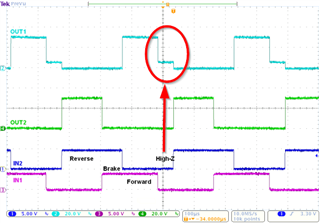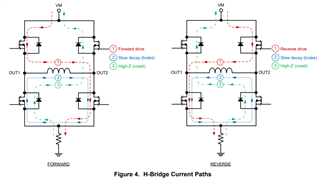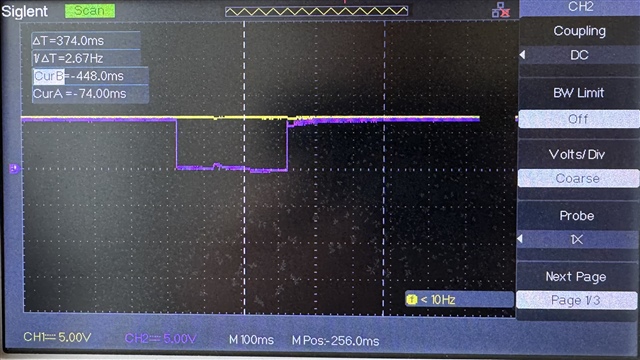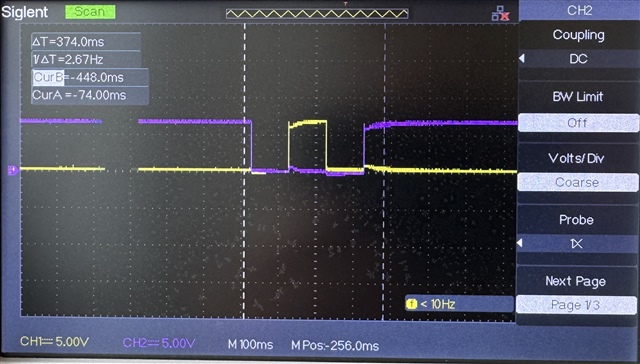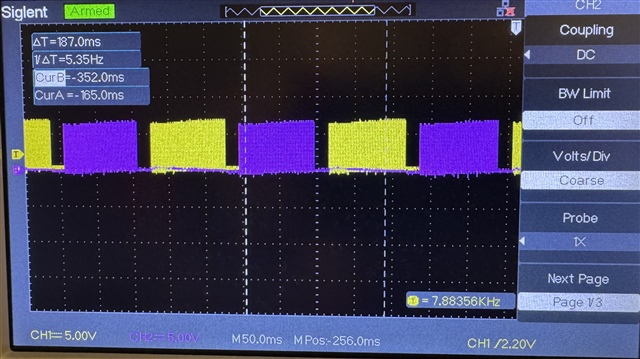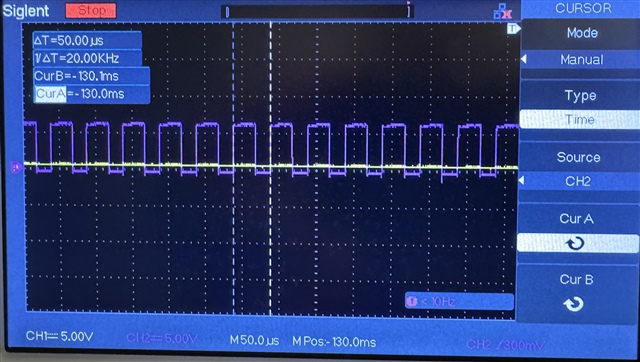Tool/software:
Hello,
I've designed a motor driver around the DRV8870 driving a this DC gearmotor. Stall current is 2.2A. I'm trying to drive it back and forth with 100% PWM with no attached load, but when I measure the two motor terminals with respect to ground I am seeing the current slowly rise but never reach the supplied 7V. I see very little noise on the supply voltage which makes me think this has something to do with the motor driver.

Here's a schematic of the design. I originally had a 0.15ohm resistor between ISEN and GND, but removed it because the motor required more than 2.2A to switch directions. Out1 and Out2 go directly to the motor terminals.
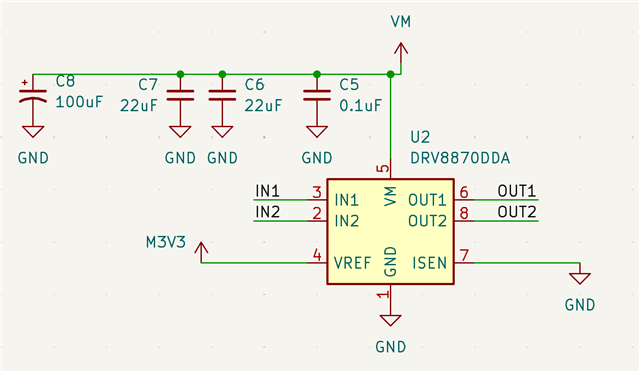
I've also verified that this motor works with a different, 7A, motor driver board when supplied the same IN1 and IN2 voltages. Here's what the the two motor terminals measure with the other motor driver. The inputs are switching directions every 100ms, vs. the 100ms forwards + 1000ms reverse in the first image.
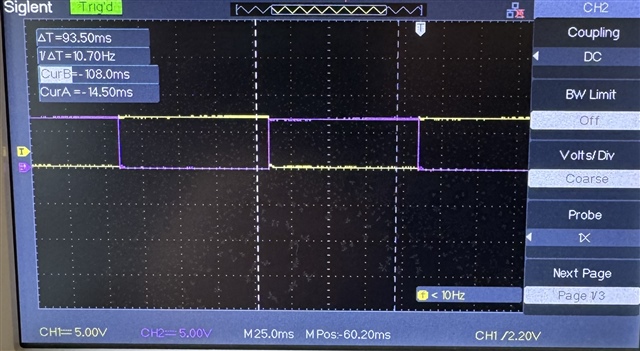
Any ideas why the DRV8870 is not working for this application?


